NLE Trenching Machine Mark I combat trencher project (UK)
By 1939, the situation in Europe deteriorated and indicated the imminent start of a major war, which forced the states to pay special attention to military equipment and armaments. At the same time, the British command had the idea of creating a special earth-moving machine capable of overcoming the enemy’s obstacles. A prospective model was supposed to create a passage for its troops, along which soldiers and equipment could approach as close as possible to enemy positions, bypassing various obstacles. Interestingly, the author of the original idea was British Prime Minister Winston Churchill, who had had his own accounts with trenches and barriers since the previous major war.
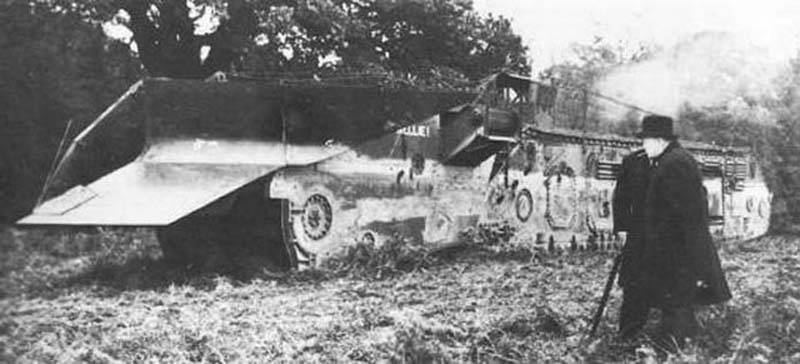
Combat trencher on trial. In the foreground - Winston Churchill. Photo Aviarmor.net
The basic idea was quite simple. It was necessary to create a special machine with earthmoving equipment. Immediately before the attack, such a technique, under the cover of night or a smoke screen, had to break through a new trench of great length and width, passing under the obstacles of the enemy and reaching the first line of his trenches. The attack on the freshly dug trench, as the author of the idea believed, made it possible to quickly prepare the battlefield for an attack, and in addition, reduce the likelihood of attacking soldiers and equipment. The main "goal" of new cars was to be so-called. Siegfried Line - a complex of fortifications in the western part of Germany.
The proposal of the Prime Minister was not interested in the military department. The reason for doubt was the numerous shortcomings of the combat trencher. Such equipment did not differ in high mobility, because of which it could become a convenient target for enemy artillery. Also, the project was seen to be too complicated both in terms of development, and in terms of serial construction and further operation of equipment. Nevertheless, the high post allowed the author of the idea to initiate full-fledged design work. Soon, the developer of the future engineering machine was selected, and some plans for serial production were determined.
The development of the project was entrusted to specialists of the specially created Department of Naval Ground Equipment fleet (Department of Naval Land Equipmen or NLE). It is by the name of this organization, and also taking into account the purpose of the equipment, that the new project received the designation NLE Trenching Machine Mark I - "NLE development trencher, first model." Subsequently, the abbreviated unofficial name Nellie appeared. In addition, the unusual project bore other names. So, at the production stage, the nickname White Rabbit appeared (“White Rabbit” - in honor of the character of Lewis Carroll's book, heading to the hole). The “agricultural” name Cultivator No. 6 was also used, which made it possible to hide the true purpose of the machine.
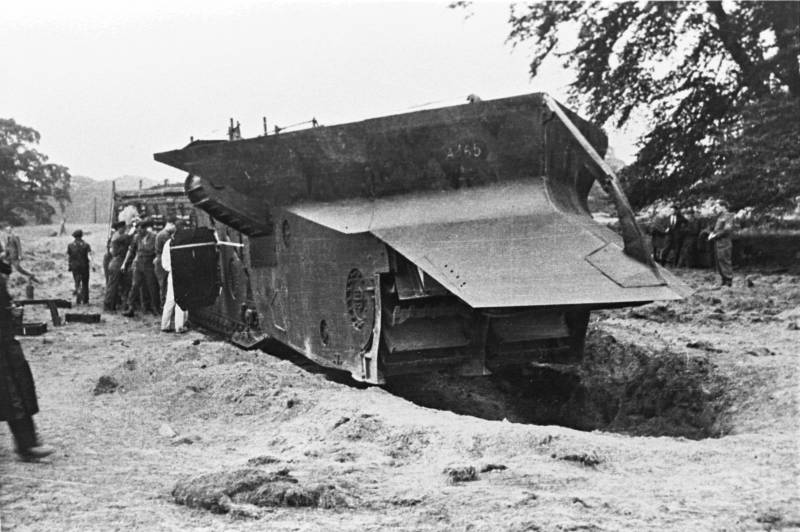
The front of the machine, clearly visible plow and chain excavator. Photo of the Imperial War Museum / Iwm.org.uk
Specialists of the newly created Department did not have experience in the development of engineering equipment, because of which the main design work on the new machine was transferred to Ruston-Bucyrus Ltd. This company was engaged in the production of excavators and other earthmoving equipment. As a result, she had the experience necessary to create a combat trencher. It should be noted that the authors of the project NLE Trenching Machine Mark I took up the new order with enthusiasm, so that the development did not take much time. By the end of 1939, experts prepared a part of the documentation, as well as produced a demonstration scale model.
In December, a trencher model with a length of about 1,2 m was presented to the Prime Minister. In addition, Winston Churchill showed it to some representatives of the military department, including the future Chief of General Staff Edmond Ironside. Sir Ironside became interested in the project, and became his supporter, which greatly contributed to the continuation of work. It is interesting that the first mention of the name “Cultivator No. XXUMX” belongs to this very time. The rapid implementation of design work led to the fact that 6 December 6, Prime Minister Winston Churchill announced the possibility of an early launch of mass production at a high rate. By the spring of 1939, the army could receive up to two hundred "White Rabbits".
On January 22, 1940, the development company received a contract for the future serial construction of engineering equipment of a new type. In early February, an additional document appeared, specifying the amount of equipment required. As part of the first contract, 200 NLE Trenching Machine Mark I machines in the Infantry modification ("infantry") and 40 "tank»Officer. Different modifications of the trencher had minimal differences associated with ensuring the combat work of different types of troops. Simultaneously with the preparation of serial production, W. Churchill made an attempt to interest the French army in the new development. The possibility of the outbreak of war should have contributed to the emergence of interest in earth-moving equipment.
By the end of 1939, the company-developer has identified the main features of the design of the machine. The specific purpose and unusual requirements led to the formation of a non-standard and original appearance. So, the car should be divided into two main units responsible for the movement and passage of trenches. In addition, the project offered some other unusual ideas.
In finished form, the White Rabbit combat trencher consisted of two main sections. The front was equipped with all the necessary equipment to interact with the ground, and the back was responsible for moving the car. Due to the peculiarities of the operation of the equipment and specific balancing, the authors of the project had to use a relatively long and heavy rear section, which was responsible for movement. The front one, in turn, was smaller and lighter, however it carried all the targeted equipment. The sections had connecting mechanisms with the possibility of changing their relative position. Lowering the front section, the crew could increase the depth of the trench, raising - reduce.
The front section of the NLE Trenching Machine Mark I was an earth moving machine itself. She received a complex-shaped body with an open lower frontal part and fixtures for equipment. The front part of the body was made in the form of a construction of several sheets located at different angles to each other. There was a wide oblique sheet and a narrow upper vertical. Provided for the use of vertical sides and horizontal roof. At the top of the sides, next to the stern, were two protruding frames of belt conveyors.
A plow was placed on the frontal part of the hull to create a trench. It had a wedge-shaped form with a relatively narrow lower and extended upper parts. This design ensured the creation of a trench, the lower part of which was wider than the hull of an engineering machine. Upper "wings" of the blade allowed to divert the soil up and sideways, eliminating the possibility of it falling back into the trench. Using a set of beams, the plow was rigidly fixed on the frontal part of the body. The lower cut of the plow was at a certain height above the supporting surface.
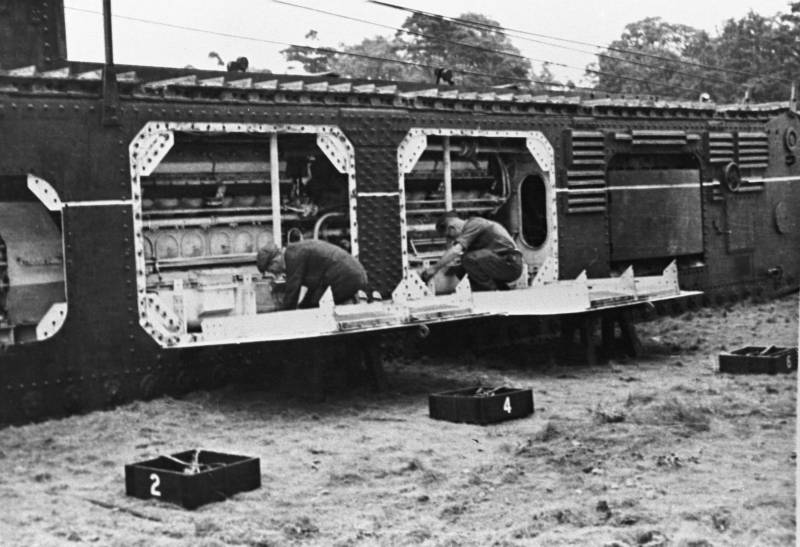
Left side of the rear section. On-board hatches are open, technicians are engaged in servicing the units. Photo of the Imperial War Museum / Iwm.org.uk
The proposed plow design did not ensure the selection of the ground to the depth of the bottom and the tracks of the machine. Because of this, the front section received additional funds for digging in the form of a chain excavator. Behind the plow, in the lower part of the hull forehead there was a large window in which there were two chains with a large number of small buckets. The teeth of the buckets were directed upwards, and the chain was fed from below. During operation, the buckets on the ribbons should have taken the soil out of the space behind the plow and fed it to the aft part of the section. There he poured into a container from which he was taken outside with the help of onboard belt conveyors. Angled conveyors ensured unloading of the soil outside the trench, forming low parapets.
The aft section of the front section of the White Rabbit had fastenings for connection with the rest of the units. In addition, this node received a shaft for transmitting torque from the power plant to the earthmoving equipment. Inside the front section there was only special equipment. Crew jobs were not envisaged there.
The rear section of the trencher was a long unit of close to rectangular section. A characteristic feature of the hull section was the use of tracks covering the side compartments. In front of the section section there were transmission devices transmitting power to the earth-moving equipment. There was also a small crew office for the crew. For the convenience of observing the terrain, the department of management had a turret with a two-wing hatch in the roof. Access to workplaces was provided by side doors. Behind the tower was a compartment for two engines. The feed was given under the transmission connecting the engine to the drive wheels of the tracked propulsion unit.
Due to the large size and weight of the rear section of the machine was divided into two parts. Compartments in divided form could be transported by existing means of transporting heavy armored vehicles. The separation took place in terms of volume between the two engines. Also during transportation, a third platform was required to transport the front section of the vehicle.
Initially, it was planned to equip a promising engineering machine aviation 1000 hp Rolls-Royce Merlin engines However, during the development of the project, it turned out that such motors with a long load can support a power of not more than 800 hp, and in addition, the pace of mass production left much to be desired. Serial engines were enough only for installation on aircraft, but not on new ground equipment. The engine problem was resolved with 600 hp Paxman-Ricardo diesel engines. They showed the required characteristics, and also were not used in other projects.
The combat trencher was supposed to get two engines at once. One of them provided the movement of the machine, the second was responsible for the work of earth-moving devices. "Running" engine using a mechanical transmission transmitted power to the drive wheels aft location. For servicing engines, large hatches in the hull sides were used. Manhole covers, which had a sufficiently large size, folded down, becoming a platform for the placement of equipment.
The car received a fairly simple undercarriage based on a tracked propulsion unit. For carrying out the tracks along the perimeter of the lateral surface of the hull, the aft drive wheel and the front guide were used. Above them, almost at the level of the roof, were placed supporting rollers. The upper branch of the caterpillar, in turn, was supported by special rails. In the lower part of the hull without a suspension and with minimal intervals, a large number of small-diameter support rollers were installed. For the correct distribution of the large weight of the machine, the chassis received 42 track rollers on each side. Cobbled caterpillars 610 mm wide with developed grouser angles were used.
In case of a collision with wire or other obstacles in front of the enemy’s positions, the engineering machine received some additional funds. On the roof of both sections, from the plow to the feed bevel, a large number of racks with wire mounts were provided. The stretched wire should have removed the barriers from the turret and the roof with the aggregates installed on it.
The project implied the construction of vehicles in modifications Infantry and Officer. "Infantry" machine did not have any additional funds. The second modification, in turn, was supposed to carry a special ramp. It was assumed that light tanks and other equipment with relevant characteristics could rise from the trench to the surface through this unit. Other differences between the two modifications were not provided.
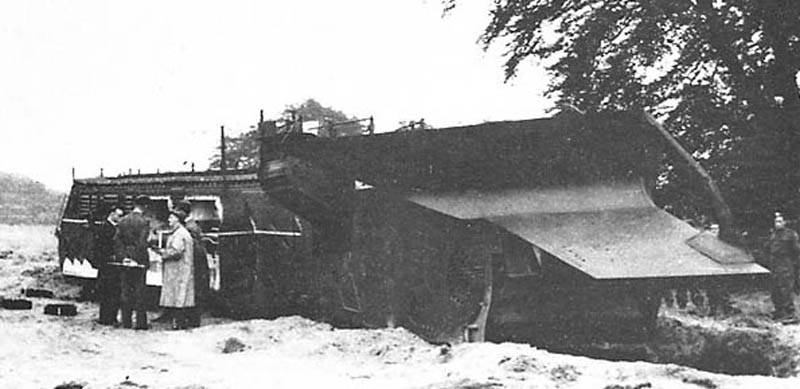
Trencher on trial. Photo Aviarmor.net
The total length of the NLE Trenching Machine Mark I trencher in the working position exceeded 23,6 m. The maximum width of the structure without plow was 2,2 m, height - up to 3,2 m. The front section with plow and excavator accounted for 9,3 m length. The width of the section reached 2,2 m, height - 2,6 m. The front unit of the disassembled rear section had a length of 7,1 m, a width of 1,9 m and a height of 3,2 m. A large height was associated with the use of the turret of the crew. The aft compartment was different in length 8,64 m and height 2,6 m. The curb weight of the car was determined in 130 t. Of these, 30 t fell on the front section. The remaining weight was distributed as follows: 45 t to the front of the rear section and 55 t to the stern.
During operation, the combat trencher was to be dug into the ground to a depth of 1,5 m. Half of this depth was processed by a plow, the second - by a chain excavator. The trench width was determined by the width of the lower unit and was 2,3 m. The shape of the plow and the work of the excavator with additional conveyors ensured the formation of two parapets, which increase the total height of the trench. The power of the undercarriage, according to calculations, allowed in the course of combat work to reach speeds from 0,4 to 0,67 miles per hour - 650-1080 m / h. At the maximum speed per hour of work, the earthmoving equipment could “process” more than 3700 cubic meters of soil with a total weight of up to 8 thousand tons.
From the place of assembly to the future trench on the battlefield, the White Rabbit machine had to move under its own power. At the same time it was possible to develop speed up to 4,9 km / h. The fuel reserve was sufficient to enter the battlefield and a fragment of a trench up to several kilometers long.
At the beginning of 1940, the development company received an order for the production of an experimental machine first, and then serial equipment. Due to the complexity and laboriousness of the construction seriously delayed. While it continued, the British military tried to formulate the principles for the combat use of trenchers. Later, certain techniques had to be adjusted in the light of the experience of battles in France. An analysis of the defense breakthrough methods used by Germany showed the inexpediency of using combat trenchers. Nevertheless, Winston Churchill insisted on the preservation of such equipment, but he had already expressed a proposal to reduce the order for serial machines several times.
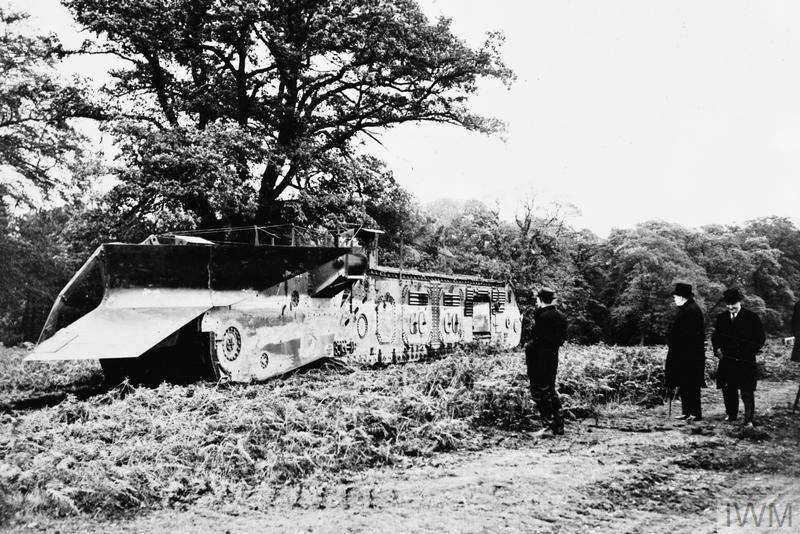
Prototype and representatives of the command. Photo of the Imperial War Museum / Iwm.org.uk
Soon the military finally became disillusioned with the original car, which from the very beginning caused serious doubts. However, the construction of the prototype was nearing completion, which was why it was decided to complete the assembly and test it. In June 1941, the first and only completed sample of the NLE Trenching Machine Mark I was put to the test. By this time, no one considered Nelly as a real engineering vehicle for the engineering troops, but the project was still interesting in terms of overall capabilities. During the tests, it was planned to test the real capabilities of the original combat vehicle.
According to some reports, by the middle of 1941, more than three dozen engineering machines were at different stages of construction. In addition, it is mentioned that, in addition to the first prototype, several other machines were completed, which also became prototypes for testing. According to such reports, a total of up to five prototypes were involved in the checks.
Tests of the new digger lasted about a year. The prototype confirmed the compliance with the design characteristics and could solve the tasks. Nevertheless, the absence of any prospects from the point of view of real combat use was established. The unusual concept had a number of characteristic minuses, which did not allow to achieve noticeable results.
The only advantage of the project “Cultivator №6” was the possibility of creating a trench for the safer movement of soldiers to the enemy lines of defense. At the same time, the car had a number of serious problems. So, it turned out to be too difficult to manufacture and operate. During the excavation work, the trencher could not maneuver, which to some extent made it difficult to create a trench for infantry. Also, low mobility made the car an easy target for artillery. The use of a reservation of acceptable thickness did not allow to solve this problem and to ensure the required survivability.
Also, by the time the tests began, it became clear that barriers and fortifications could not be particularly difficult for modern military equipment when properly used. The troops of Nazi Germany, without significant problems, overcame the French defense, the objects of which could not hold back the offensive. In the future, the available methods allowed the German troops to begin a successful advance into the territory of the Soviet Union. The Germans did not use combat trenchers, but even without them showed high effectiveness of the attacks.
In terms of technical, operational and tactical features, the NLE Trenching Machine Mark I combat trencher could not give the troops any significant advantages. Mass production of machinery was canceled. The built prototype (or prototypes) after the tests did not need the army. The prototype went to storage without any hope of returning to testing, not to mention the continuation of production and the beginning of operation in the troops. The NLE Trenching Machine Mark I / Nellie / White Rabbit / Cultivator # XXNX was not needed by anyone at any British military base until the early 1950s. Then it was decided that he was in vain takes a place and should go to the scrap. Soon, a unique sample of equipment went to the disassembly and remelting.
Original and bold ideas sometimes lead to real revolution in their field. However, more often, such proposals do not give the expected results and remain in stories as technical curiosities. W. Churchill’s proposal to overcome the enemy’s barriers and fortifications was also not the beginning of another technical revolution. From the very beginning, the military were skeptical of the original idea, and subsequently their opinion was confirmed in practice. A special combat trencher was too complicated for the army, and subsequent events showed that such equipment was simply not needed. The White Rabbit had no future and could not dig up a single hole in the battlefield.
On the materials of the sites:
http://strangevehicles.greyfalcon.us/
http://aviarmor.net/
http://paxmanhistory.org.uk/
http://iwm.org.uk/
https://drive2.ru/
http://henk.fox3000.com/
http://gutenberg.us/
http://shushpanzer-ru.livejournal.com/
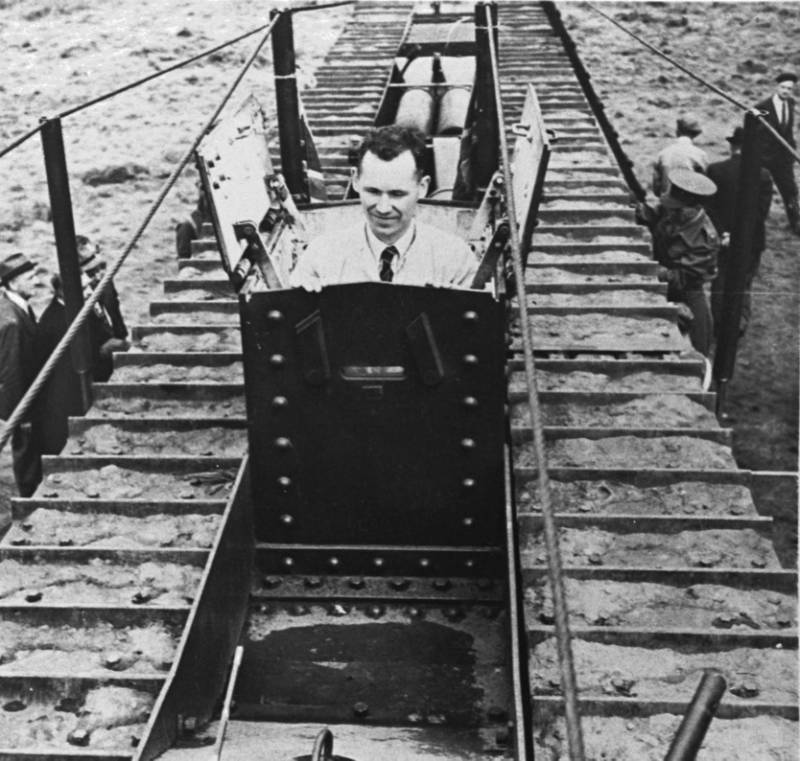
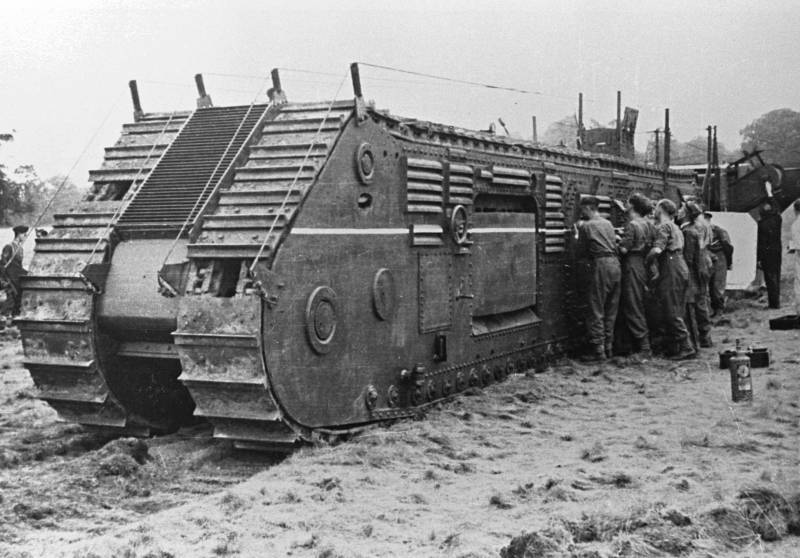
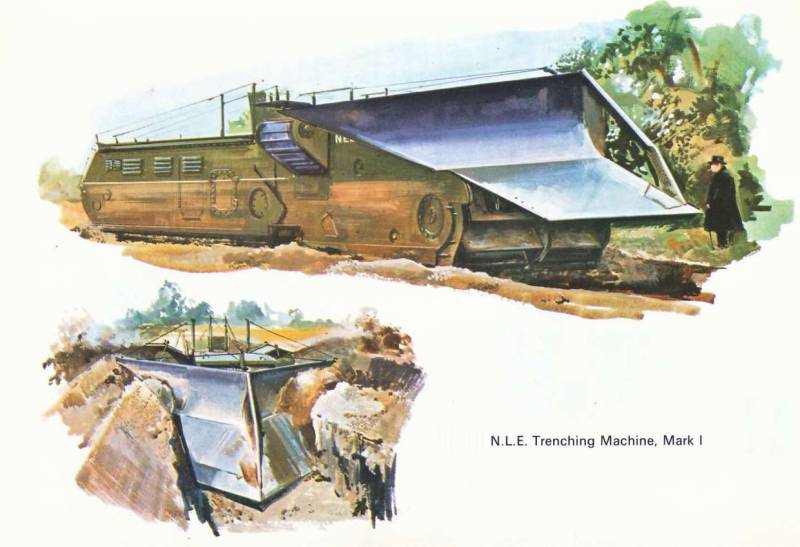
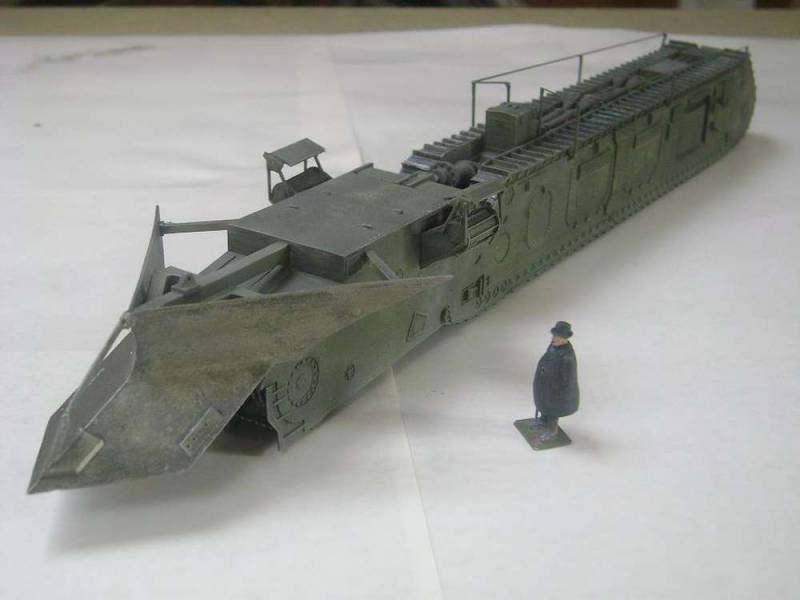
Information